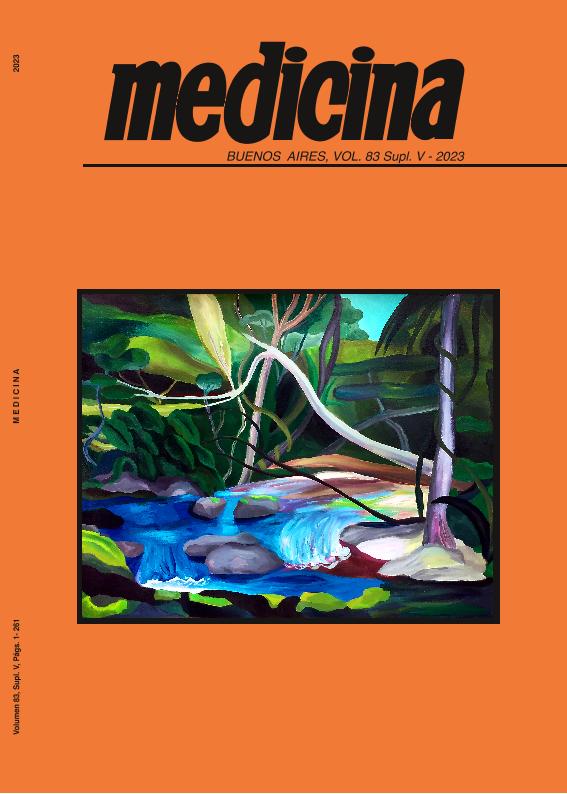Evento
Chronic depolarization of OHC impairs the maturation process of the MOC system
Colaboradores:
de Vito, Eduardo ; Lüthy, Isabel; Laudanno, Oscar M.
; Lüthy, Isabel; Laudanno, Oscar M. ; Narvaiz Kantor, Isabel
; Narvaiz Kantor, Isabel
 ; Lüthy, Isabel; Laudanno, Oscar M.
; Lüthy, Isabel; Laudanno, Oscar M. ; Narvaiz Kantor, Isabel
; Narvaiz Kantor, Isabel
Tipo del evento:
Congreso
Nombre del evento:
Reunión de Sociedades de Biociencias 2023; LXVIII Annual Meeting of Sociedad Argentina de Investigación Clínica (Saic); Xxv Annual Conferences of Sociedad Argentina de Biología (Sab); Lv Annual Meeting of Asociación Argentina de Farmacología Experimental (Aafe); Viii Regional Scientific Meeting of Asociación Argentina de Ciencia y Tecnología de Animales de Laboratorio (Aacytal)
Fecha del evento:
15/11/2023
Institución Organizadora:
Sociedad Argentina de Investigación Clínica;
Sociedad Argentina de Biología;
Asociación Argentina de Farmacología Experimental;
Asociación Argentina de Ciencia y Tecnología de Animales de Laboratorio;
Título de la revista:
Revista Medicina
Editorial:
Fundacion Revista Medicina
ISSN:
1669-9106
Idioma:
Inglés
Clasificación temática:
Resumen
The efferent pathway mediated by the medial olivocochlear (MOC) system regulates the excitability of outer hair cells (OHC). In re- sponse to sound overstimulation, the MOC system activates nico- tinic acetylcholine receptor α9α10, which in turn, activates BK and SK2 channels, helping KCNQ4 to remove K+, and to restore resting membrane potential (RMP). Several conditions lead to chronic de- polarization by K+ accumulation (i.e. KCNQ4 impairment), damaging OHC and causing hearing loss. We hypothesized that the KCNQ4 absence, by altering RMP impacts the organization and function of the MOC system affecting the setting of the hearing process. Using confocal imaging, we evaluated the location of MOC terminals on OHC in Kcnq4+/+ and Kcnq4-/- animals at different stages: imma- ture (2 postnatal weeks (W)), and fully developed (3, 4, and 10W). At mature ages, MOC terminals are exclusively located in the OHC basal domain in WT animals. At 2W, both genotypes possess 32% of synaptic contacts in the lateral domain. Subsequently, all termi- nals relocated to the basal domain in WT animals. However, in KO ones, 9.5%, 15% and 1.5% of the terminals remained in the lateral domain at 3, 4 and 10W, respectively. Moreover, we detected a de- crease in both, the number of synaptic contacts per OHC and their volume, in 4 and 10W KO animals remaining unaltered in WT ones. On the other hand, we analyzed by qPCR the expression of the post- synaptic efferent components located in the MOC synapse. In 4W Kcnq4-/- animals, the mRNA expression of α10 subunit decreased 3.5-fold with no changes in α9 subunit; and BK and SK2 decreased 8-fold. However, at 10W, α10 expression returned to WT levels while BK increases 6-fold. These findings show that chronic depolariza- tion affect the efferent innervation development and the expression of its components in OHC, impacting the MOC system function. This contributes to hearing impairment by compromising the precise tun- ing role exerted by the MOC system on OHC transduction
Palabras clave:
CELULAS CILIADAS EXTERNAS
,
SISTEMA EFERENTE
,
SYNAPTOFISIN
,
MATURATION
Archivos asociados
Licencia
Identificadores
Colecciones
Eventos(INIBIBB)
Eventos de INST.DE INVEST.BIOQUIMICAS BAHIA BLANCA (I)
Eventos de INST.DE INVEST.BIOQUIMICAS BAHIA BLANCA (I)
Citación
Chronic depolarization of OHC impairs the maturation process of the MOC system; Reunión de Sociedades de Biociencias 2023; LXVIII Annual Meeting of Sociedad Argentina de Investigación Clínica (Saic); Xxv Annual Conferences of Sociedad Argentina de Biología (Sab); Lv Annual Meeting of Asociación Argentina de Farmacología Experimental (Aafe); Viii Regional Scientific Meeting of Asociación Argentina de Ciencia y Tecnología de Animales de Laboratorio (Aacytal); Mar del Plata; Argentina; 2023; 149-150
Compartir



